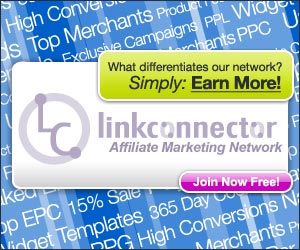Copywriting For An Online Audience
So what’s the big deal about copywriting for the Internet? It’s the same as any other form of copywriting isn’t it? In a word, yes. But in another word, no. Confused? Sick of all these questions? I had better myself explain then.
No matter what medium you are using, all copywriting should have one prime objective - create an effective message that appeals to the audience it is intended to influence. This golden rule applies to websites, brochures, and sales letters, even adding a nice message to Grandma’s little pink birthday card. However, the Internet presents a number of unique challenges for a copywriter, even if the people reading your sales letters are the same ones reading your website.
Think about it for a minute. Do you read on the Internet the same way you read on paper? Not for long. First of all, there are comfort factors such as the monitor resolution, colours, glare, and a reading surface that doesn’t move. Second, we are conditioned to read websites in a different manner. Online, we are quite comfortable scanning sub-headings, clicking on hyperlinks, and jumping between pages.
Third, the majority of people looking at your business website are there because they seek a service that you provide. After all, they made the effort to visit you didn’t they? The online reader can be impatient and demanding, and they usually know what they want before they click through he door. If your business doesn’t impress them straight away, it’s a quick tap on the keyboard to find someone who will. Even if you do provide the product or service they need, it doesn’t take much effort to duck into your competitors store for a browse around. Website copywriting is a bit like speed dating - you have to make a big first impression and leave them thinking -I bet we’d be good together".
Readers of hard copy sales material don’t have the luxury to pick and choose, so they become somewhat of a captive audience. After all, it takes a lot more effort to call or visit your competitors business in the real world. In addition, a brochure could sit on a potential customers desk for months, staring at them with puppy dog eyes, day in day out, until one day the customer decides to make some enquiries.
With these unique challenges in mind, here are a few copywriting pointers to help make your website a lean, mean, highly effective, sales machine:
1. Snatch their attention from the first paragraph
Most visitors spent less than one minute summing up a website before they decide whether to stay or go. There is no time for waffling paragraphs about who you are, where you live, and how your wife makes the best apple pie. You have to get to the point as fast as you can. If you don’t convey your key message in the first few lines, don’t expect many people to be around to read them further on.
2. Short paragraphs
If you want people to read your website, forget the long descriptive, romantic prose about the salubrious ambience of your pulchritudinous offer. They will only think you are stercorous (take my word for it, you really don’t want to be). Short paragraphs are most effective on the web because they can be differentiated and skimmed at a glance. Visual layout is the key.
3. Make sure your copy flows
Reading online is straining enough. Flowing on from the point above, using jargon, formal language and/or trying to impress your audience with your knowledge of words containing more than ten letters will only make the reader irritated, frustrated and start to think about places or sites they’d rather be.
4. KISS
Remember the old adage Keep It Simple Stupid? Write as though your audience is a bunch of twelve year olds. Don’t sound patronising, but don’t assume they know anything about your business or what you do. They have arrived laden with buring questions, "What are you selling?" "Why should I choose you?" "Where are you?" "How can I get some of this?" "How much is it?"
5. Appropriately tempt your audience
A lot of hot and personal activity goes down on the Internet, but lets face it, the technology itself isn’t causing readers monitors to fog up. The content is what makes things exciting. The Internet itself is just an impersonal two-dimensional screen. Good copywriting might not always be intended to get the heart racing, but it must connect with your intended audience to break through this impersonal barrier. Maybe you need a little humor, sophistication, cold corporate speak, personal touch, or yes, even something racy.
Why people do not buy
When people do not buy from you, it is because they do not want what you are offering. They may need what you are offering and not know or acknowledge that need, but the bottom line is they do not want it.
Save lots of time, effort and money by targeting your postcard mailings to groups of people who have demonstrated they want your product or service or one's similar to yours and then mail to them. Follow at least this one piece of advice and become more profitable immediately.
Target your marketing. Promote your business exclusively to people likely to have a strong desire for the benefits provided by your product or service.
Businesses and consumers do not usually avoid purchases because they do not have or cannot get the money necessary to purchase. They usually do not buy because they decide buying something else is more important to them.
You can get them to buy from you by making it clear to them that buying your product or service will get rid of something they do not want or will get them something they do want or will get them more of something they already have that they like having.
It is your job to get your people and businesses to see that your products and services give or get them what they really want. Consumers and businesses rarely avoid buying something because they do not have the money needed to make the purchase. They avoid buying what you offer because they place a higher priority on spending money for something else.
What is the most nagging problem you can solve for prospects in your targeted market? Make it real to them how they'll feel when your product or service eliminates that problem. Use postcards to communicate how they can get their problem solved.
They do not want to buy and then find out that your product or service would not solve their problem. They do not want to be or even feel ripped off or still at a loss over the solution to their problem.
You must take away their risk in doing business with you.
You must provide a way that they can "trust" you.
If you do not they would not buy and you will lose business.
When you do all these things, guess what? People will buy from you like crazy. You will see them pounding at your doors.
Other Projects
Subscribe
Subscribing will enable you to get regular notifications about new postings...
Check out the Survival Gear from Atlanta Cutlery Corp today










